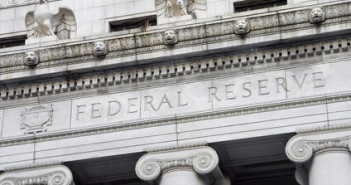The Federal Reserve took action in the past two meetings, pledging low rates and announcing “Operation Twist. It is likely to take a break now, as conditions improve.
For the first time since June, the statement will be followed by a press conference by Ben Bernanke. A lack of big announcements in the statement can be complemented with a press conference that can trigger high volatility.
Background
The last FOMC meeting was held in September and included the Twist: A move to change the current holdings of US bonds held under QE1 and QE2 towards the long end of the curve, at a scale of $400 billion. The goal was to encourage long term lending and investing.
Some members considered enlarging the balance sheet of the Fed and embarking on QE3. The urge to “do something” to help the economy stopped short of such a move. One of the goals of QE2 was to prevent deflation. This has succeeded, although the economy didn’t really shine.
Inflation was on the rise before the previous meetings, and continued rising towards the current one. So, QE3 or any hints have very low chances of being mentioned.
What has changed is the economy: the initial reading of GDP in Q3 hit 2.5%, much more than 1.3% in Q2 and than the miserable 0.4% in Q1. The chances of recession are low. Also an initial, yet important sign for Q4 was positive. The Philly Fed Manufacturing Index turned positive in October – a very positive sign.
The weak and painful spot remains employment. The unemployment rate has stabilized, and the US continues seeing gains in jobs, but the pace is painfully slow. This is stall speed. The last Non-Farm Payrolls report was somewhat encouraging, but not enough, especially as the “real unemployment rate” remained elevated.
Probable Statement and Reaction
In August, the Fed pledged to leave interest rates at low levels at least until mid 2013. In September, Operation Twist was announced. With the recent positive signs, there’s less pressure on the Fed to act for the sake of acting.
So, a repeat of the interest rate pledge is likely to remain in the statement. So is the “twist” which will continue. With no changes in policy, the focus will probably shift to the forecasts.
- Cautious optimism about improving signs is the most probable outcome. This will be a change from the worries expressed last times, and may trigger a risk rally. The markets are still under the influence of the “risk factor”, where positive US figures weaken the dollar, and negative ones strengthen it against most currencies, with the exception of the yen.
- If the tone remains worried, the dollar is likely to gain against everyone, apart from the yen. This has a lower chance, but cannot be ruled out, given the employment situation.
Any new policy tool will come as a surprise at this time. The Fed already used two big bullets which have a limited effect. Bernanke already hinted more than once that the ball is in the government’s field.
Targeting nominal GDP will be bullish for stocks and bearish for the dollar. But as aforementioned, the chances are low.
All in all, this will likely be a more quiet event in comparison to the previous two.
Press Conference
Bernanke isn’t likely to move from the statement. So at the first part of the conference, his tone and voice will be of high importance. In many past appearances, his voice trembled at first and he relaxed later on. A firm voice from the very start, together with more a more optimistic forecast will also help the risk rally.
The questions phase is more interesting, even though Bernanke wasn’t “grilled” like Trichet was. More detailed questions about Bernanke’s views on the economy could prove interesting. Past conferences included referrals to the housing sector: Bernanke put the blame on foreclosed homes.
He also said that “a long period of time” with rates, means at least two or three meeting before a move. In the meantime, a more specific pledge was released.
So, the reporters could get interesting responses that will impact the markets.
Extra Notes
It’s important to note that in past events, the full effect of the Fed decisions was often felt only many hours later, at the Tokyo opening or even the European session. It takes time to digest the sometimes obscure statements.
The FOMC statement will be released on Wednesday, November 2nd, at 16:30 GMT. The press conference is scheduled for 18:15 GMT.
